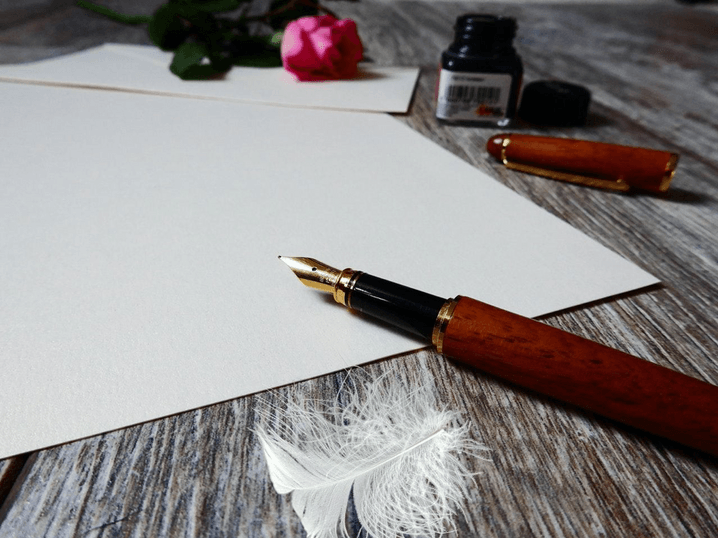
What type of paper should you use for your resume?

Though job boards and applications have mostly moved online, there are still reasons to print your resume on an actual piece of paper. Job interviews, job fairs, networking events, and mail applications are all situations where a paper resume is important.
Just like when you apply for a job with a PDF, it’s important to make sure that your paper resume stands out from the rest. This requires not only great resume content with an attractive layout, but paper that shows professionalism and style. In this article we will discuss the different types of paper you can use to print your resume.
Recommended links:
- Our collection of 500+ professional resume examples.
- Our gallery of 20+ downloadable resume templates.
- Our cover letter examples
What is resume paper?
Resume paper is a heavy, high-quality, and often off-white paper used for resumes and other important documents. It tends to be sturdier and longer-lasting than regular printer paper. Resume paper gives your resume a professional feel, and evokes a high standard of quality that employers appreciate.
You could, of course, print your resume on whatever standard paper you already have sitting in your printer. Many job seekers do this. But to stand out, better quality paper goes a long way.
What paper should you print your resume on?
There are many factors to consider when choosing a paper type. The weight, colour, material, and texture will all affect the appearance of your resume.
Paper weight
Paper weight is a measurement of a ream, or 500 pages, of that paper before it is cut down to size. Paper weight tells you the thickness of the paper. The heavier it is, the thicker it is.
Typical printer paper is 20lb. For a resume it is better to use a heavier paper stock, such as 24lb or 32lb. The heft and thickness of these weights gives the paper a feeling of importance and professionalism. Where regular 20lb paper is flimsy and tears easily, 32lb paper feels sturdy and important. With a heavier paper weight, your resume will feel like something made to last.
Paper colour
Many job-seekers wouldn’t think to use a colour other than white to print something. When it comes to printing a resume, however, plain white isn’t the only option. The two main colours used for printing resumes are white and ivory.
White
White is the colour of typical printer paper. It will work well for any resume design, as the white background won’t interfere with the colours of the resume.
Ivory
Ivory is a warm, off-white colour that can give your resume a classic feel. It works best with traditional resume designs, like VisualCV’s Monte template. A classic, professional resume template paired with high-quality ivory paper makes for an impressive resume.
However, if your resume has large coloured sections, like VisualCV’s Avant template, the off-white colouring of ivory paper may interfere with the colours. Simple designs and dark colours will look best on ivory paper. Make sure to test different papers before sending your resume along to an employer so you know your resume layout still looks as good as it can.
Other colours
Paper is, of course, available in many different colours. For the purposes of resume paper, however, it is safest to stick with white or off-white. More colourful paper may be difficult to read, or stand out for the wrong reasons. Employers won’t be interested in reading a bright red resume.
If you are in a particularly artistic field like graphic design or illustration, you may prefer to use coloured paper to demonstrate your creativity and really stand out. If this is the case, make sure the colour is subtle, like light blue or a gentle yellow. The colour should be mild enough that it complements the resume design, and the resume should still be easy to read.
Paper material
The ingredients that make up your paper affect how the paper feels. The right materials can make a big difference. As you research paper materials for your resume, the important thing to look for is cotton content.
Cotton paper is a strong, durable type of paper that is commonly used for important documents like resumes. It is soft to the touch, making it pleasant to handle, and it lasts longer than typical printer paper. Printing your resume on 100% cotton paper will ensure that it is sturdy and impressive.
Typical printer paper is made using wood pulp. As long as it is thick and high-quality enough to print well without the printer ink bleeding through, the paper in your printer can handle a resume if necessary. When it comes to printing a document this important, however, higher quality cotton paper will improve the appearance and durability.
Paper texture
Many producers offer different paper textures, called finishes. Parchment paper, woven paper, linen paper, and velvet paper all have slightly different textures and appearances. A popular choice for resumes is linen, which is a pleasant woven texture meant to feel like the fabric it is named after.
Adding unusual textures to your resume can be risky, however. The added ridges may make your resume more difficult to print, and some employers may find the texture to be a distraction rather than a refined touch. If you particularly like the look of linen paper—and your printer can handle it—then it is an acceptable choice, but for most job-seekers a resume without a finish is ideal.
Paper size
Your resume should be the standard paper size for your region. In The US and Canada, this is Letter size paper, or 8 ½” x 11”. In Europe and much of the rest of the world, use an A4 paper, or 210mm x 297mm. There shouldn’t be any need to do research here, as the paper already in your printer—or at your local print shop—will likely already be in the regular size.
What Color Resume Paper is the Best?
Ivory or White colored resume paper is generally the best for most resumes. They both support most font colors very well and reduce the risk of your resume’s text becoming too hard to read.
How thick should the resume paper be?
We recommend that your resume paper should be between 37 gsm to 47.36 gms. To find this resume paper, look for 25lb and 32lb text paper respectively.
Is Blue resume paper OK?
Blue resume paper is okay as long as the text is readable to the hiring manager. We commonly see blue being used and accepted in the case of creative job applications.
Should I use White or Ivory resume paper?
While using a resume paper, Ivory colored resume paper leaves a much higher impact when it is used for a traditional job application. A white resume paper on the other hand is a great fit for the majority of the job applications.
Can you put resume paper in a normal printer?
Yes, you can place a resume paper in a normal printer. If your resume paper is watermarked, you need to print a sample to see if the output is as you expected. Once you are sure, you can go ahead and print your resume on the watermarked resume paper using your normal printer.
What is the difference between resume paper and regular paper?
A resume paper is much stronger and more durable than a regular paper. A regular paper feels weaker when handed over to a hiring manager, whereas a resume paper would leave a higher impact.
Should resume paper have a watermark?
Watermarked resume paper displays that an applicant cares enough about the job application that they end up picking a higher quality paper.
What is the weight of the resume paper?
A resume paper typically has a weight between 25 lb to 32 lb.
The Bottom Line
That’s a lot of information for something so everyday as paper! At the end of the day, what type of paper should you use for your resume?
When it’s time to print your resume, 32lb, 100% cotton, ivory paper is likely your best bet.
If your resume is colourful, you may not want to use ivory, and if you can’t afford 100% cotton paper, a lower percentage will do. Even 24lb or 28lb paper is sufficient if you can’t find 32lb paper. The important thing is that your paper is slightly heavier and higher quality than typical paper. When every other candidate submits plain, 20lb printer paper, your thicker, finer paper is sure to stand out.
- What is resume paper?
- What paper should you print your resume on?
- What Color Resume Paper is the Best?
- How thick should the resume paper be?
- Is Blue resume paper OK?
- Should I use White or Ivory resume paper?
- Can you put resume paper in a normal printer?
- What is the difference between resume paper and regular paper?
- Should resume paper have a watermark?
- What is the weight of the resume paper?
- The Bottom Line

Written By
Ben Temple
Community Success Manager & CV Writing Expert
Ben is a writer, customer success manager and CV writing expert with over 5 years of experience helping job-seekers create their best careers. He believes in the importance of a great resume summary and the power of coffee.

CV Photo Advice and Tips: Should your CV have a photo?
June 26, 2020
Read Post

Co-Founder & Director

We've interviewed CV and Resume Professionals to find out the list of ESSENTIAL hobbies and interests employers are looking for on your CV in 2018.
September 14, 2020
Read Post

Co-Founder & Director

Over 50+ professional cover letter examples to include with your job application - easy to create a custom cover letter for each application.
April 12, 2022
Read Post

VP Marketing & Resume Expert
Copyright ©2024 Workstory Inc.